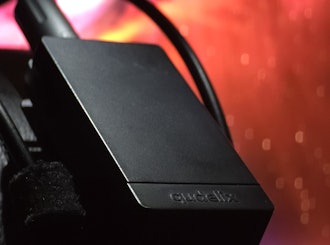Click to view our Accessibility Statement or contact us with accessibility-related questions.png?auto=format&fm=jpg&fit=fill&w=46&h=46&fill=solid&fill-color=fff&bg=fff&dpr=1&q=70)























.png?auto=format&fm=jpg&fit=fill&w=46&h=46&fill=solid&fill-color=fff&bg=fff&dpr=1&q=70)
Showing 1 of 126 conversations about:
rantng
845
Mar 18, 2018
bookmark_border

davehutch
23
Mar 18, 2018
bookmark_border
rantngThanks for posting this. It's important to say that this article is not referring to 'balanced headphones' or 'balanced headphone amplifier outputs' as that is totally different.
Good explanation for balanced audio though

mikenai1987
0
Mar 18, 2018
bookmark_border
rantngthank you for sharing this article. learnt something about balanced and unbalanced audio. by the way, just to clarify, closed and open headphones is something separate from balanced and unbalanced audio correct?
abit off topic, i have been putting off if it is worth spending on a headphone instead of smaller portable earbuds.
abit off topic, i have been putting off if it is worth spending on a headphone instead of smaller portable earbuds.

davehutch
23
Mar 18, 2018
bookmark_border
mikenai1987Yes, Open and Closed headphones refer to the construction of the ear cups. Open headphones allow sound in and out from the outside world, but allow the driver to ‘breathe’ leading to generally wider soundstage and a feeling of airyness about the sound. Closed back headphones are sealed from the outside world so tend to have the opposite effects to open backed headphones

mikenai1987
0
Mar 18, 2018
bookmark_border
davehutchThanks Dave. (However in SG, the weather makes headphones abit uncomfortable after sometime.)
Just another small question, the +ve and -ve sound signals is generated by the hardware (i.e. DAC from respective hardwares with the correct output terminals) and not from the audio source right?
Just another small question, the +ve and -ve sound signals is generated by the hardware (i.e. DAC from respective hardwares with the correct output terminals) and not from the audio source right?

davehutch
23
Mar 18, 2018
bookmark_border
mikenai1987Think of the +ve as the path the signal takes as it travels to the transducer (coil that moves the diaphragm). The -ve is simply the path it takes back into the amp.
The audio signal is an alternating signal so varies between -ve and +ve voltage, which either pushes or pulls the diaphragm to create air pressure and therefore, sound

mikenai1987
0
Mar 18, 2018
bookmark_border
davehutchoh. I thought it was signals generated from the source to the input. Thanks Dave for sharing.

davehutch
23
Mar 19, 2018
bookmark_border
mikenai1987I'm not sure I answered your question correctly. Can you ask it again in a different way?

mikenai1987
0
Mar 19, 2018
bookmark_border
davehutchYup you did, i just thought initially that both +ve and -ve signals are generated from the source equipment to the input audio equipment.
When you explained that, if i interpreted it correctly to obtain the balanced audio.
+ve signal is from source equipment (i.e. dac)
-ve signal is from input audio equipment (i.e. headphone)

davehutch
23
Mar 19, 2018
bookmark_border
mikenai1987Don't think of it as +ve and -ve cables. It's a continuous, varying voltage travelling down the signal core of the cable and going back into the amp down the 'return' side of the cable.
The signal itself varies between being above zero volts (+ve) and below zero volts (-ve).
Read this:
https://www.head-fi.org/threads/what-are-balanced-headphones.518138/page-2#post-13324817
Related Posts

LostnAmerica
Sound Signature of the Grell Project.
Wondering what type of sound signature the Drop Grell project headphones will have or trying to attain. Any update would be appreciated.
Apr 8, 2024

Fabulous
Looking for a gaming/content audio setup
Hello! I'm looking for recommendations on audio setups. I'd be planning on using it mostly for gaming. Preferably I'd like a pair of large closed back headphones since I have a big head and jaw. I'd also like to hear myself through my mic with mic monitoring. As far as budget goes, I don't really have one. But under 600$ would be nice. I can go higher if needed. The audio setup would be connected to a high performance PC. Thank you in advance for any recommendations!
Apr 4, 2024

1plsd
$10 Drop Coupon Email not sent?
Trying to buy some gear off Drop for the first time. I was told I would receive an email with a welcome to drop $10 off promo. I never received that email. Drop was able to send me emails for my login token and email for Password update. But for some reason the $10 off coupon was never sent to me.
Mar 31, 2024
Mr.Hazmat
What would be a good portable Dac/Amp to use with my HD6xx and Sony Xperia 1 V cell phone?
I am new to this hobby. I purchased a HD6XX and plan to use it with my Sony Xperia 1 V cell phone, that has a 3.5mm jack. I was wondering if I needed a portable dac/amp or just a portable amp and if so what would one recommend? Any assistance one could provide, would be greatly appreciated. Kind regards, Haz
Mar 7, 2024

JonathanWB
Invest in Balancing my HD6xx headphones?
Hi... I'm a songwriter/producer. I have Drop Senn HD6xx HPs. I just bought a Topping L30 II SE HP amp to enhance my monitoring. It honestly sounds pretty good. The audio interface I'm using (an Audient iD22) has balanced outs. For those of you who've listened to the HD6xx using balanced amps and cables, do you think I should invest in that kind of setup to take advantage of the Senns potential?
Feb 22, 2024
adiaz7531
B1 Bluetooth Music Receiver
Hello! Has the AudioEngine B1 Bluetooth Music Receiver ever been available here as a Drop?
Feb 15, 2024
Trending Posts in Audiophile

Simthaniel
Rigs
Modded headphones with qudelix at the core
When I received the Qudelix 5K, I had already modified a pair of Superlux HD-681 headphones. I previously soldered my own balanced connections to the drivers, providing multiple ways to connect and...
Apr 14, 2024

brothamike
A decent set of IEMs
I am in the midst of a 300 hour burn-in but, I will say I am enjoying how this set sounds so far. Before I received these which was btw late by a few weeks, I purchased a Sony/Kimber Kable MMCX...
Apr 12, 2024
merrick97
Should I exchange the PC38X for better headphones?
I bought the PC38X headphones FOR GAMING and they are great, but I have NO use for a Microphone since I don't do competitive gaming and I was wondering if there were better headphone options at a similar price without a headphone, where (presumably) more of the cost was put into making it sound better. I also find that my PC38X don't get quite as loud as I would like and I was wondering if a cheap amp like the iFi Go link would draw a little more volume out of my phones. https://www.amazon.com/dp/B0BN6MM822?psc=1&ref=ppx_yo2ov_dt_b_product_details I went with the PC38X since it was considered the best bang for buck headphones. I care most about using spatial apps like DOlby Atmos and DTS Headphone:X. Suggestions are welcome.
Apr 11, 2024

LostnAmerica
Sound Signature of the Grell Project.
Wondering what type of sound signature the Drop Grell project headphones will have or trying to attain. Any update would be appreciated.
Apr 8, 2024

Fabulous
Looking for a gaming/content audio setup
Hello! I'm looking for recommendations on audio setups. I'd be planning on using it mostly for gaming. Preferably I'd like a pair of large closed back headphones since I have a big head and jaw. I'd also like to hear myself through my mic with mic monitoring. As far as budget goes, I don't really have one. But under 600$ would be nice. I can go higher if needed. The audio setup would be connected to a high performance PC. Thank you in advance for any recommendations!
Apr 4, 2024

1plsd
$10 Drop Coupon Email not sent?
Trying to buy some gear off Drop for the first time. I was told I would receive an email with a welcome to drop $10 off promo. I never received that email. Drop was able to send me emails for my login token and email for Password update. But for some reason the $10 off coupon was never sent to me.
Mar 31, 2024

NMPacella
New here
Hello, I just joined, primarily for the audiophile products. Looking at purchasing the NHT C3 speakers for our new living room. Space is about 15 feet wide by 33 long and they will fire long ways. Space is just for general listening, music room with all equipment is downstairs, so hoping they will fill it with sound nicely. Cheers.
Mar 18, 2024




Balanced Vs. Unbalanced Audio: What's The Difference?
Anyone who’s dipped their toes into the waters of live audio production knows that various small things have a huge impact on sound quality. For example, did you know that every cable you use in your production setup has the potential to add noise to your audio feed? It’s important to understand audio cables – and how they’re made – to properly assess which one is right for the job.In this post, we’ll discuss the types of signals that different cables carry. As you’ll soon learn, they can either be balanced or unbalanced. This post dives deeper into what balanced and unbalanced audio means. Unbalanced Audio (2 Wires) An audio cable carrying an unbalanced signal uses two wires: a signal and a ground.The signal wire, as the name suggests, carries the audio signal to where it needs to go. The ground wire acts as a reference point for the signal. However, the ground wire itself also acts like an antenna, picking up unwanted noise along the way.
Quarter Inch TS Cables Quarter inch TS (tip, sleeve) cables are generally used for unbalanced signals. These are most commonly used with electric guitars, which often output to an amplifier. The diagram above shows how the cable works.
BALANCED AUDIO (3 WIRES): The structure of a balanced audio cable is similar to an unbalanced cable – with one addition. A balanced audio cable has a ground wire, but it also carries two copies of the same incoming audio signal, sometimes referred to as a “hot” (positive) and “cold” (negative) signal.
What’s the difference between the hot and cold signal?The two signals are reversed in polarity, so as they travel down the cable, they cancel each other out (think of how adding positive and negative numbers of equal value amounts to zero).